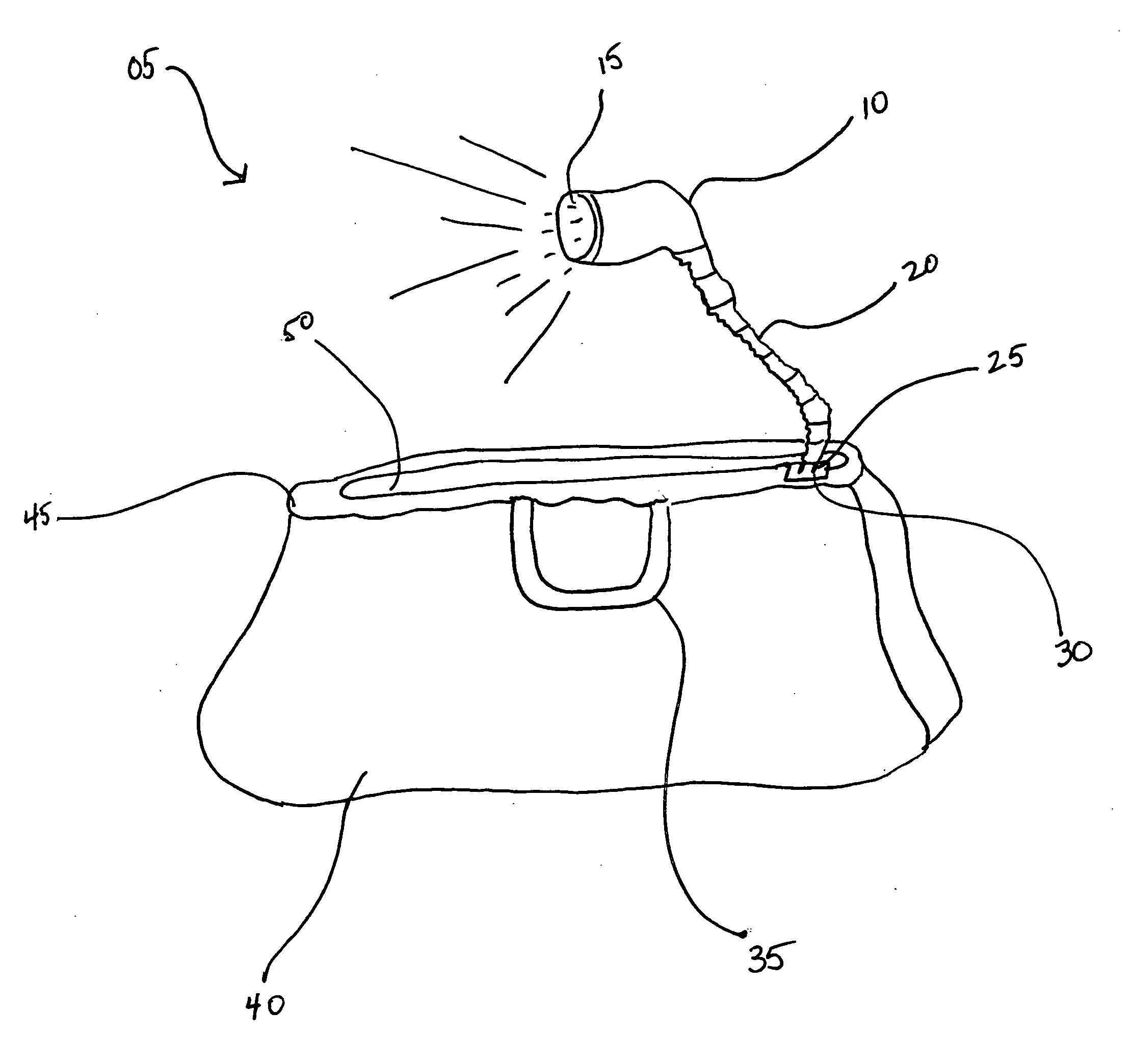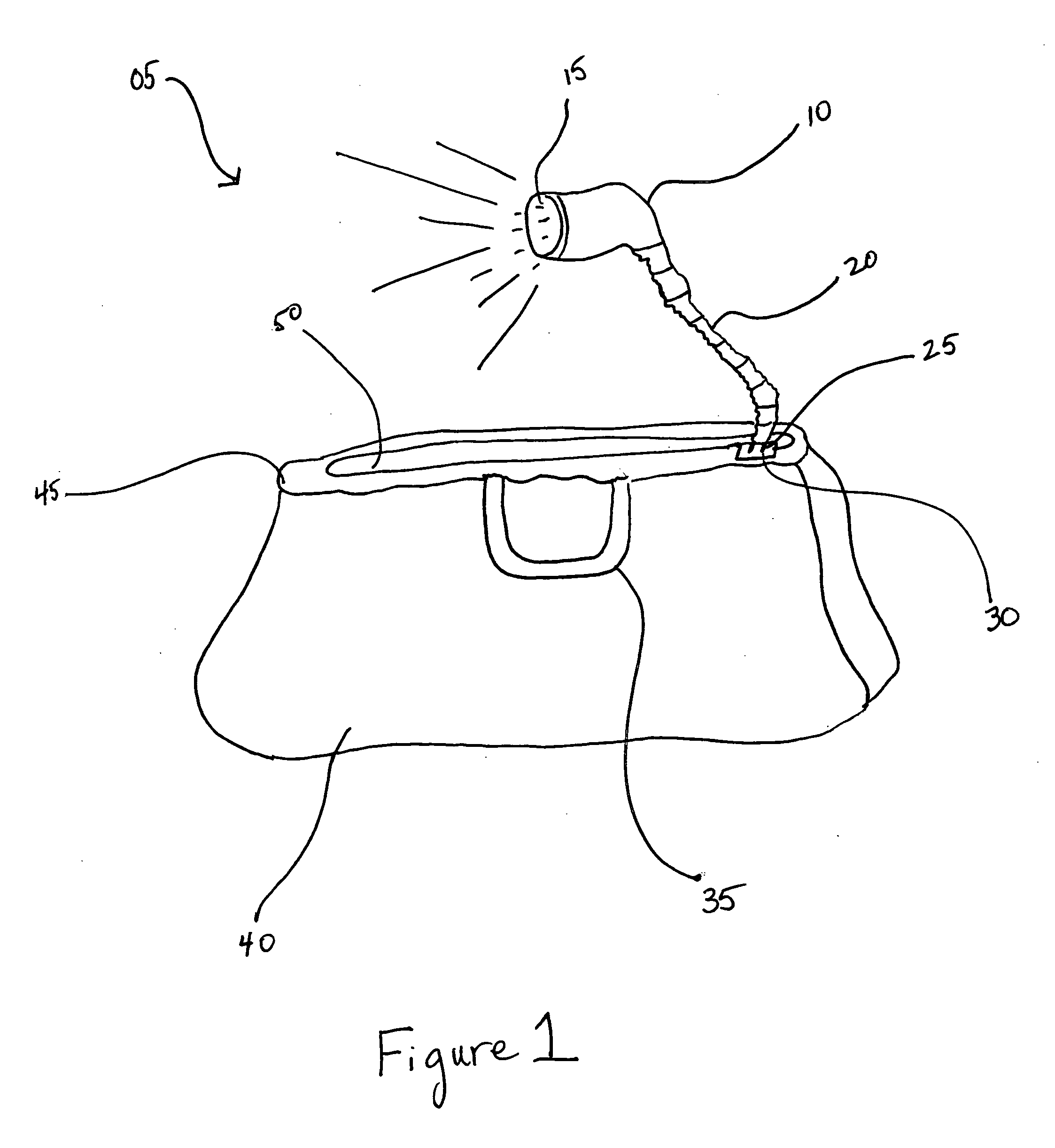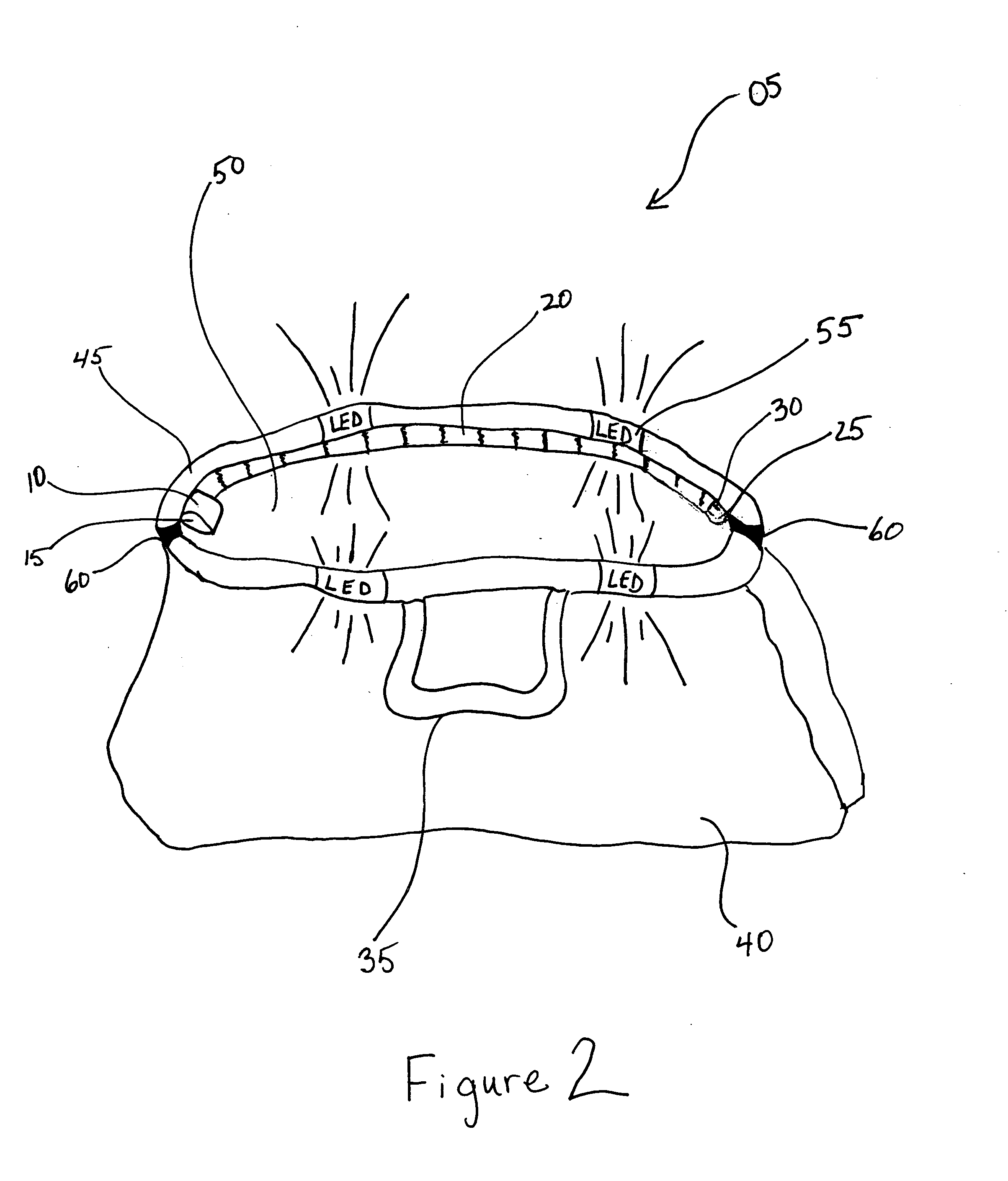Manufactures have struggled to devise illuminating devices that are useful in pocketbooks, book bags, luggage, backpacks and the like.
Several of these devices are discussed below as well as the problems associated with each of the devices.
The positioning of the
light source inside the bag makes it difficult, if not impossible, to shine the device in any particular direction outside of the pocketbook since the inside flap would have to be held open in order for the light to shine in this manner, thereby defeating the purpose of a hands-free lighting device.
Such temperatures increase chances for damage to the pocketbook contents and will likely injure users upon contact.
Battery power is quickly consumed limiting the illumination time.
Also being located inside the pocket book makes it useless as a hands-free illumination source for a
construction worker or electrician using the light shined from the bag to illuminate a work place.
As a result, the illumination provided to the pocketbook's interior contents is minimal.
Moreover, the light source is not directional to outside of the bag and has little to no use for illuminating an external workplace.
As a consequence, complete
visibility of the handbag contents is impeded.
The high temperature
bulb and its location inside a pocket within the handbag's interior tend to melt
heat sensitive objects such as
lipstick, or ignite flammable articles such as
tissue paper.
Hand contact with the hot
bulb may cause
skin damage.
And finally the light is limited to the interior of the bag unless held open to provide minimal illumination making hand-on not hands-free.
It consumes substantial power, and is large, heavy and expensive.
If left in the “on” condition for an appreciable time period, the
flashlight develops heat likely to damage the pocketbook contents.
Moreover, this is simply no more than a pocket to store a convention
flashlight making it readily available when necessary.
This device does not provide hands-free illumination, is only directional by moving it by hand and holding it there to illuminate a particular area very much like a conventional
flashlight.
Inasmuch as
bulb illumination is directed downwards solely, objects in the purse can shadow each other, limiting the user's ability to see them.
Light available for illumination is limited due to the distance between the flashlight and the purse contents.
Since the light bulbs are expected to be hot, any contact between the lighted bulbs with
heat sensitive contents of the handbag will result in melting or product deterioration.
Moreover, physical contact with these bulbs may cause
skin damage or ignition of flammable material, such as
tissue paper.
If the handbag is suddenly inverted, objects in the handbag may
impact the illuminating bulbs, causing bulb breakage and production of glass shards.
The
large distance between the bulbs and the bag contents results in poor illumination unless the bulbs are run at
high intensity levels, which would increase bulb temperatures and likely damage
heat sensitive contents of the handbag.
Owing to the
large distance between the incandescent light bulbs and the handbag contents, illumination of objects is limited.
If the handbag is suddenly inverted, objects in the handbag may
impact the illuminating bulb.
In such instances, the bulb would likely break, producing glass shards.
Incandescent bulbs tend to burn hot.
They can easily damage heat sensitive objects such as
lipstick and the like.
Heat from incandescent bulbs can ignite
tissue paper, and burn the handbag contents or its user.
The
large distance between the bulbs and the handbag contents results in poor illumination.
If the handbag is suddenly inverted, objects there within may
impact these multiple illuminating bulbs, causing breakage and production of glass shards.
It is unprotected, and can damage heat sensitive products in the handbag; or ignite tissue paper; or burn the user.
The light is situated far above products in the handbag, limiting illumination of handbag contents.
Although this light can be taken out of the purse to illuminate the outside it provides only minimal light and is not hands-free.
However, the light source is far away from the handbag contents.
As such, it provides limited illumination for contents of the handbag.
Articles are likely to shadow each other, preventing full
visibility and the light cannot be removed or focused outside the bag to illuminate a
workspace next to or at a distance from the bag and / or light.
Although this light can be taken out of the purse to illuminate the outside it provides only minimal light and is not hands-free.
Since it is detachably attached to the sidewalls of a handbag, the collimated spotlight essentially directs a
light beam on the other sidewall of the handbag, and does not effectively illuminate the contents of the bag.
Detaching the spotlight can illuminate the contents of the handbag; but this requires more than two hands.
Moreover, although this light can be taken out of the purse to illuminate the outside it provides only minimal light and is not hands-free.
Attachment areas for the light bulb structure within the sidewalls of a purse are limited, due to the increased weight of the batteries.
Such a device is too bulky for use in illuminating contents of a purse and yet does not provide enough light to illuminate an area where work is to be done.
Moreover, once removed the device has to be held therefore using one of the workers hands which does not make the device a hands-free device.
Although the above patents discuss a bag light they are directed to purse lights and are not designed to be directional so as to shine up to about 10 feet or more away from the bag.
The prior art lighted bags are also not designed to extend out of the bags to provide light to a work place as with the workbag or illuminate the path and alert drivers of the whereabouts of the user wearing the backpack.
The above-mentioned prior art devices do not provide such devices.
 Login to View More
Login to View More  Login to View More
Login to View More 


